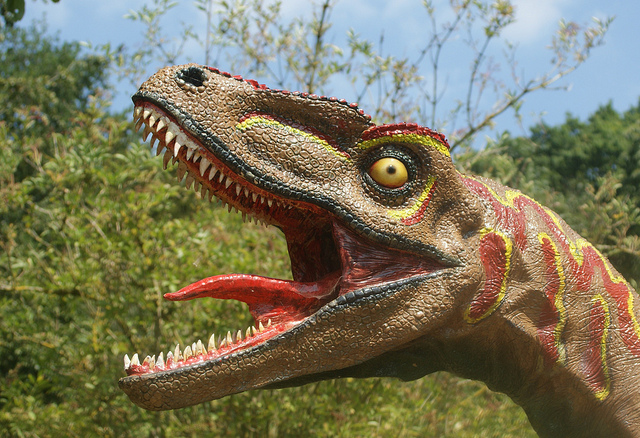T. Rex Couldn’t Stick Out Its Tongue
December 3, 2018

Dinosaurs are often depicted as fierce creatures, baring their teeth, with tongues wildly waving like giant, deranged lizards. But new research reveals a major problem with this classic image: Dinosaurs couldn’t stick out their tongues like lizards. Instead, their tongues were probably rooted to the bottoms of their mouths in a manner akin to alligators.
Researchers from The University of Texas at Austin and the Chinese Academy of Sciences made the discovery by comparing the hyoid bones — the bones that support and ground the tongue — of modern birds and crocodiles with those of their extinct dinosaur relatives.
The research was published June 20, 2018, in the journal PLOS ONE.
“Tongues are often overlooked. But they offer key insights into the lifestyles of extinct animals,” said lead author Zhiheng Li, an associate professor at the Key Laboratory of Vertebrate Evolution and Human Origins of the Chinese Academy of Sciences. He conducted the work while earning his doctorate at the UT Jackson School of Geosciences.
Co-author and Jackson School Professor Julia Clarke said that the findings mean that dramatic reconstructions that show dinosaurs with tongues stretching out from between their jaws are wrong.
“They’ve been reconstructed the wrong way for a long time,” Clarke said. In contrast to the short hyoid bones of crocodiles, the researchers found that pterosaurs, bird-like dinosaurs, and living birds have a great diversity in hyoid bone shapes. They think the range of shapes could be related to flight ability. The researchers propose that taking to the skies could have led to new ways of feeding that could be tied to diversity and mobility in tongues
Back to the Newsletter